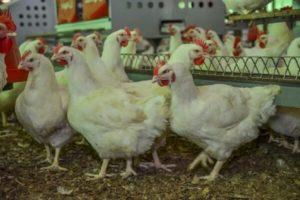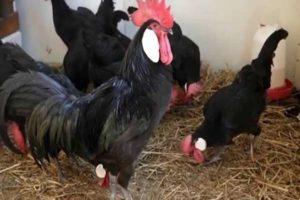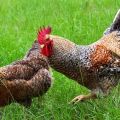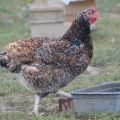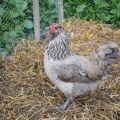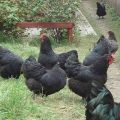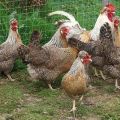Description and characteristics of the productivity of Plymouthrock chickens, the subtleties of the content
When planning to raise chickens, many people wonder which species to choose. A good breed of chickens is Plymouth Rock, a description of which will answer all questions. Small chicks, when properly cared for, develop into robust adult birds. In a short period of time, a person will be provided with egg and meat products.
Historical reference
For the first time the species of chickens appeared in America, therefore it is often found under the name American Plymouth Rock. The variety was obtained in the 19th century by crossing many breeds. The breed received official recognition in 1910.
General description and characteristics of the breed
Knowing this information, a person can easily recognize the breed without buying a fake.
Appearance
There is such a color:
- white;
- blue;
- partridge;
- pale yellow;
- striped;
- the black.
The feathers of striped roosters are lighter in color. Typically, the stripes end at the base of the feather. Plymouth Rock's fluff is devoid of obvious pattern, but the lines are slightly visible.
The medium-sized head has a leaf-shaped crest. The number of teeth ranges from 4 to 6 pieces. The eyes are orange and the beak is yellow. The body is rectangular, elongated and wide. The neck is straight, the chest and abdomen are full. The tail has thick plumage. The wings are close to the body and set high.
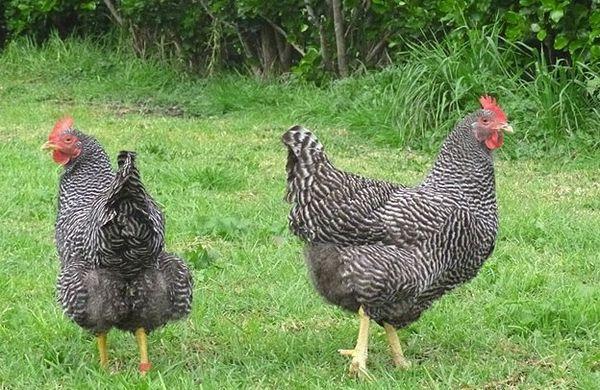
Temperament
By nature, chickens are peaceful and curious. Plymouth Rock does not attack other birds and does not behave viciously towards them. Females often endure attacks by other birds and are unable to defend themselves.
Productivity
The breed is considered egg and meat. Due to its versatility, the Plymouth Rock breed is bred not only at home, but also in industrial conditions. The weight of the rooster is 4 kg, females - 2.5, but some especially large ones reach the 3 kg mark.
Young chickens that have reached the age of 6 months begin to lay eggs. Moreover, the level of egg production remains high throughout the year. The shell is light brown in color.
Incubation instinct
The breed is characterized by a highly developed maternal instinct. Chickens incubate eggs, and when chickens appear, they protect them from other birds. Chickens practically do not leave eggs in the nest, which allows you to get a brood of young animals without using an incubator.
Types of Plymouth Rocks
There are many types of breed. However, the most common are striped Plymouthrocks with a predominance of white. There are also hybrids.
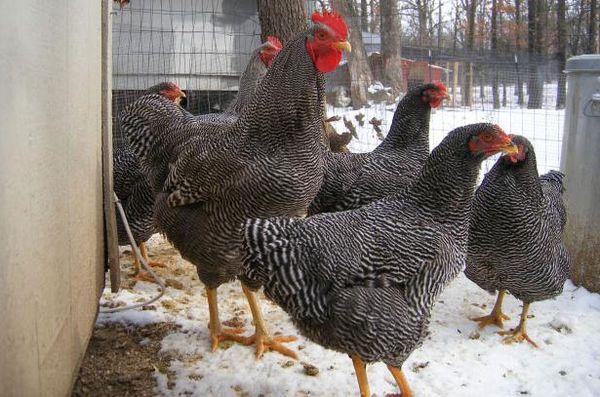
Main advantages and disadvantages
A large number of positive aspects guarantee successful breeding of birds:
- earlier puberty;
- egg production at a level above average;
- good immune system;
- rapid development of chickens and weight gain;
- calm temperament;
- activity;
- beautiful feather color and overall appearance.
Despite the good taste of meat and the large number of eggs that chickens lay, Plymouth Rock also has disadvantages:
- exactingness to the diet;
- the high cost of chicks;
- long process of plumage of chicks.
Before deciding whether to breed a breed or not, the advantages and disadvantages are carefully weighed.
Breed conditions
Includes different moments - arrangement of a chicken coop, a walking area, food and care.
Chicken coop
The chicken room must be spacious and free from objects that can be hit and injured. Installation of partitions and high perches is required. The floor covering is covered with a layer of hay or straw. Peat serves as an alternative.
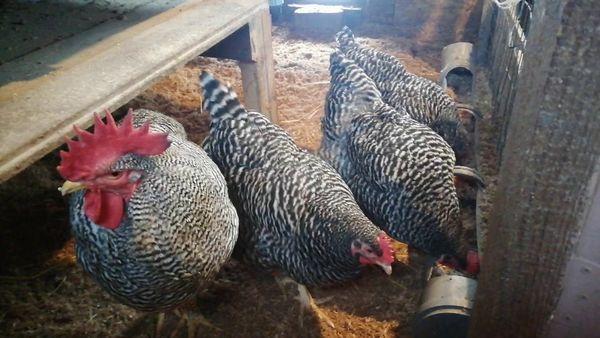
Place for walking
Plymouth Rock needs sunshine and fresh air all year round. The walking area should be fenced with material that the birds cannot damage against. If necessary, the courtyard is covered with a net for greater security.
Drinking bowls and feeders
Food and water supplies are purchased or made independently. An excellent option for chicks is plastic feeders and drinkers with a dosage option. For adult chickens, hand-made wooden feeders are suitable.
How winter is tolerated
In severe frosts, Plymouth Rock should not be let out into the street, even though the immunity is strong. A large number of feathers and a physique help to survive the cold. But the comb and earrings are freezing because there is no feathering.
Plymouth Rock gets sick when the temperature drops to -5 degrees. In order for the chickens to safely endure the winter period, the owners teach them to do this starting in October.
Molting and break of egg production
The loss of feathering is a natural process, so you should not associate the phenomenon with illness. Molting falls in November, begins with the onset of pre-winter cold weather. The period lasts on average from 2 to 3 months. During the moulting period, Plymouth Rock stops laying eggs.
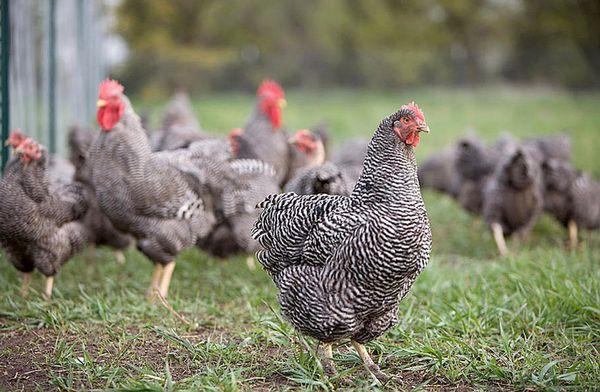
Planned herd replacement
Chickens of this breed are able to live for a long time. 3 years after birth, much fewer eggs are laid, and the taste of the meat loses its quality. Therefore, it is recommended to renew the herd.
What to feed the bird
Eating preferences of adult chickens and young animals differ.
Chicks
During the growth of Plymouth Rock, people must carefully monitor their diet. There are two types of starter feeding. In the first case, it is grated boiled yolk. The second feed option is boiled corn grits. When choosing food, preference is given to the second option. Corn grits are perfectly digestible, do not harm Plymouth Rock's digestive system.
From the second week of life, the bird is given a mixture of egg yolk and semolina. Upon reaching the age of one month, coarse grains and freshly cut grass are introduced into the diet of the bird. During the day, Plymouth Rock is given fresh root vegetables and vegetables. This ensures the saturation of the body with additional trace elements and vitamins.
Upon reaching the age of one and a half months, the birds are given grain or balanced feed. Some individuals receive fermented milk products or other products that help restore the functionality of the immune system. As a rule, such chicks lag behind in growth and development.
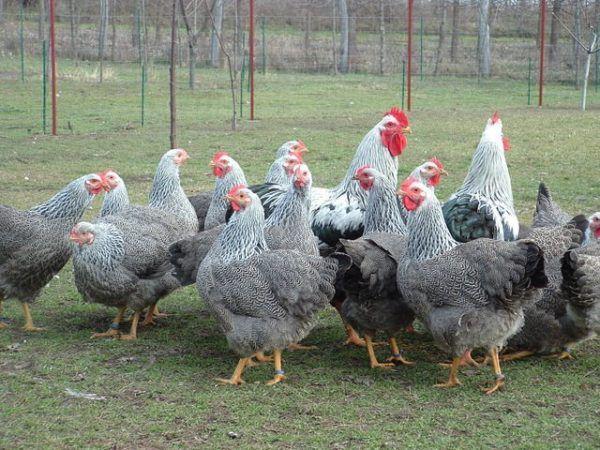
Adults
The diet of adult chickens includes:
- Wet mixes based on boiled vegetables, cereals and low-fat broth.
- Whole grains.
- In the warm season, fresh grass is added.
- Combined feed - wheat, corn and barley.
When it gets colder, Plymouth Rock is especially useful with a damp mash. Whole grains should always be available for consumption throughout the year. Combined feeds are given in small quantities, since they play the role of an additive.
An increase in feed volume by 10-15% in the cold season helps to maintain body temperature.
Diseases of the breed
Due to its strong immunity, Plymouth Rock rarely gets sick. The sources of diseases are parasites, so they urgently need to get rid of. All that is required of a person is to keep the chicken coop clean, feed the birds and regularly carry out preventive measures.
